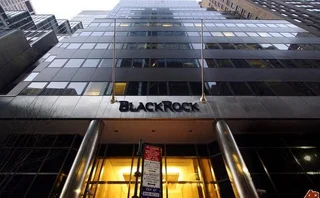
Lazard and Pimco profit from shorting Hong Kong dollar
Repeat interventions from HKMA fail to revive a currency under pressure from rising US rates

The rapid rise in US interest rates has roiled investments from technology stocks to cryptocurrencies. But one trade is enjoying a renaissance: shorting the Hong Kong dollar.
Lazard Asset Management, Fiduciary Management and Pimco held net short positions of US$323 million, US$110 million and US$89 million in Hong Kong dollar FX forwards, according to data gathered from regulatory filings in the
Only users who have a paid subscription or are part of a corporate subscription are able to print or copy content.
To access these options, along with all other subscription benefits, please contact info@risk.net or view our subscription options here: http://subscriptions.risk.net/subscribe
You are currently unable to print this content. Please contact info@risk.net to find out more.
You are currently unable to copy this content. Please contact info@risk.net to find out more.
Copyright Infopro Digital Limited. All rights reserved.
As outlined in our terms and conditions, https://www.infopro-digital.com/terms-and-conditions/subscriptions/ (point 2.4), printing is limited to a single copy.
If you would like to purchase additional rights please email info@risk.net
Copyright Infopro Digital Limited. All rights reserved.
You may share this content using our article tools. As outlined in our terms and conditions, https://www.infopro-digital.com/terms-and-conditions/subscriptions/ (clause 2.4), an Authorised User may only make one copy of the materials for their own personal use. You must also comply with the restrictions in clause 2.5.
If you would like to purchase additional rights please email info@risk.net
More on Investing
How investment firms are innovating with quantum technology
Banks and asset managers should be proactive in adopting quantum-safe strategies
Top 10 investment risks for 2026
AI, strained governments, inflated private assets: risky bets have become hard to avoid
Review of 2025: It’s the end of the world, and it feels fine
Markets proved resilient as Trump redefined US policies – but questions are piling up about 2026 and beyond
Asset managers prep autocall ETFs with assets tipped to hit $30bn
Actively managed strategies wait in the wings after systematic approach nets Calamos $500m
Citi launches core inflation QIS
Custom indexes eliminate energy and food prices to ease trading of stickier inflation trends
BlackRock appoints Pierre Sarrau as chief risk officer
Current CRO Edward Fishwick will be head of research at BlackRock’s RQA group
Japan’s yen swaps go global
JSCC isn’t just clearing swaps, it is clearing the way for the next stage of Japan’s financial evolution
How Bessent learned to stop worrying and love the T-bill
Short-dated issuance shows no signs of slowing. Some fear it could end badly.







